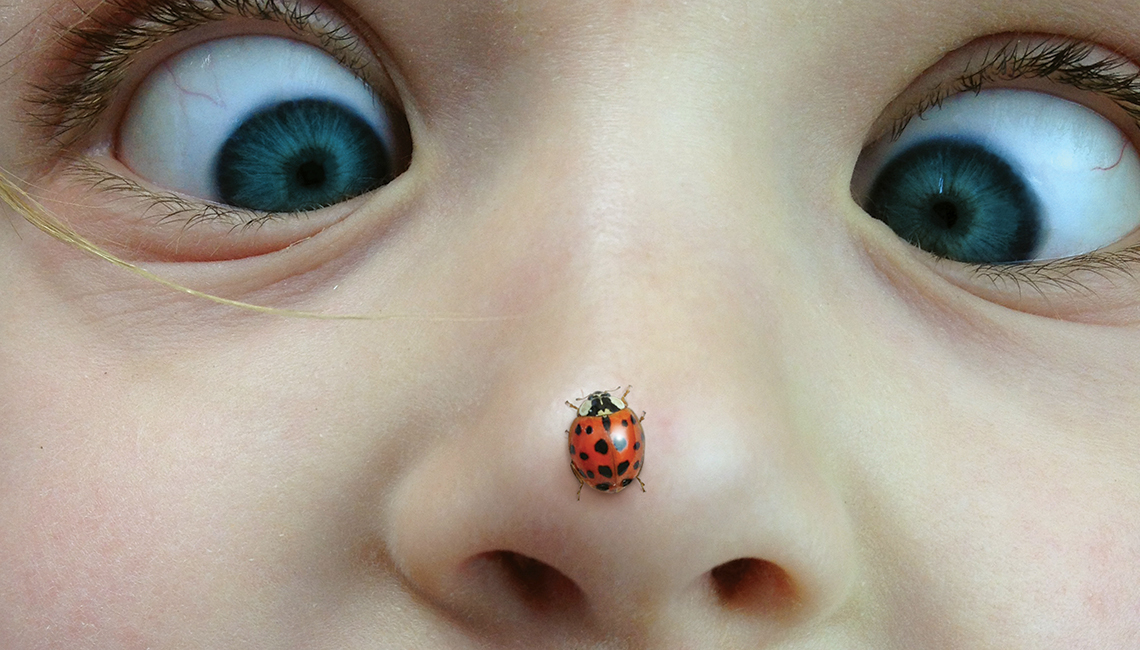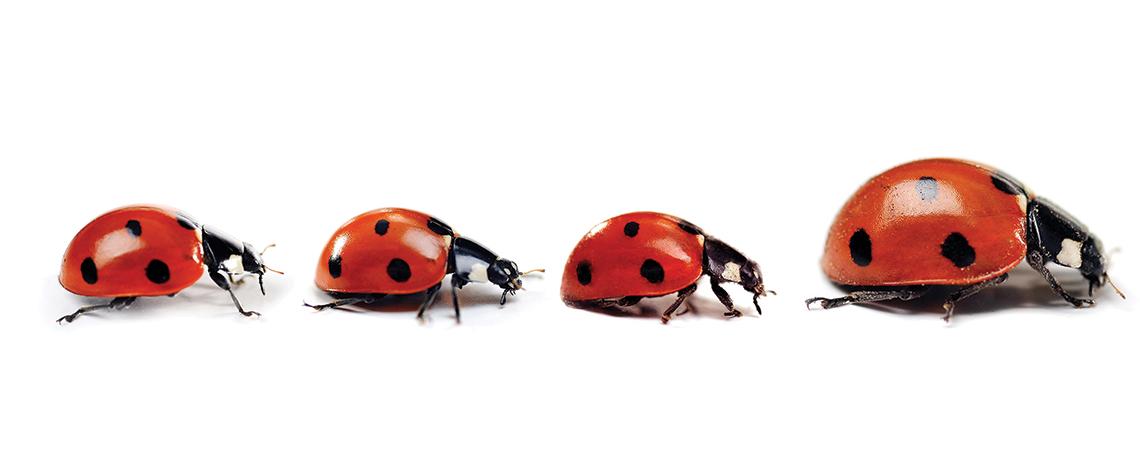In 1975, the Ohio General Assembly chose the ladybug as the official state insect, citing attributes shared with the great people of the Buckeye State.
“The ladybug is symbolic of the people of Ohio,” reads the legislature’s proclamation. “She is proud and friendly, bringing delight to millions of children when she alights on their hand or arm to display her multi-colored wings, and she is extremely industrious and hardy, able to live under the most adverse conditions and yet retain her beauty and charm, while at the same time being of inestimable value to nature.”
The legislative body overlooked this: Ladybugs also are implacable, plundering predators — though that’s not a bad thing.
Despite the cuteness, ladybugs are efficient eating machines.
This orange-and-black or red-and-black speck of an insect (which is technically a beetle rather than a bug) is the size of a pencil eraser, and it brings a welcomed utility to orchardists and farmers alike. Ladybugs, as cute and dainty as they may be, are voracious predators of other bugs, including some destructive ones that are too small for the human eye to see.
Ladybugs live two years and survive the winter in their adult form, hiding en masse beneath the frostline under rocks and downed timber. As winter turns to spring, the warmth that comes with extra daylight stirs them to reproduce. Adults lay clusters of about 50 eggs at a time, strategically placed near colonies of aphids and mealy bugs or other tiny pests that tend to destroy agricultural crops and greenhouse plants.
The ladybug eggs incubate in less than five days. When they hatch, the larvae, which look like tiny, spiny crocodiles, are born into that smorgasbord and immediately go about their business of eating all those destructive neighbors. In less than two weeks, they change from that rather scary-looking form into the familiar Volkswagen-shaped beetle.
Despite the cuteness, the adults are also efficient eating machines. They’re equipped with razor-sharp jaws that slice and squeeze their insect food. A single adult can consume upward of a thousand aphids in a single day.
Their bright colors don’t provide camouflage in vegetation — quite the opposite. Their striking colors convey a message in nature that they are toxic. When agitated or picked up by a bird, ladybugs emit toxins that repulse would-be predators.
In folklore, they have long been held as a harbinger of summer, hence another name for the little bugs: St. Barnaby’s bees. On the pre-Gregorian calendar, June 11, St. Barnaby’s Day, marked the beginning of summer and the date ladybugs were expected to make their first appearance of the season. Depending on the weather, though, they may start emerging from their winter naps as early as April.










